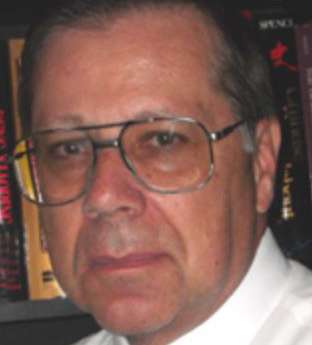
By JOHN RICHARD SCHROCK
China is now leading the U.S. in 37 of 44 technology fields, according to the March 2, 2023 summary by The Guardian. Their data comes from the Australian Strategic Policy Institute that looked at the top ten-percent of cited papers worldwide across science fields. This confirms an earlier August 10, 2022 release by Japan’s National Institute of Science and Technology that examined the top one percent of highly cited research papers worldwide and found China now produced 27.2 percent while the U.S. followed with 24.9 percent. In total output of research papers during 2018-2020, Chinese researchers published 407,181 while U.S. researchers only wrote 293,434.
This is a continuation of educational trends going back over 40 years. Chinese universities surpassed the U.S. in STEM graduates in 2007. Their number of science research publications exceeded ours in 2017 and their numbers of patents surpassed us in 2019. The Australian and Japan studies are the 13th and 14th studies since August 2021 that document this U.S. decline in science production. These other studies are from American thinktanks including Harvard’s Belfer Center, the Center for Strategic International Studies, Center for Security and Emerging Technology, National Foundation for American Policy, and others.
You can trash any theory that this is all because “China steals from us.” When I stand in front of a class of 60 Chinese students about to graduate and become high school biology teachers, I ask: “In the future, will we need to know more science, the same amount of science as today, or less science?” And the answer is one unified voice: “More Science!” from the mouth of every student. That is not the response that I get when speaking in front of American audiences where our science curriculum has actually shrunk in many states since the Sputnik era.
A student in China spends twice as much time in K-12 science coursework as does an American student. Indeed, they know more science content when they graduate from high school than our elementary teachers have learned when they graduate from U.S. colleges. In the U.S., the number of science courses taken by high school science teachers varies dramatically state-by-state. Many take few science courses but lots of ever-changing Ed School methods courses. In China, high school teachers are trained at bachelor degree level in science departments with course requirements equal to those going into industry or further advanced study for research.
U.S. teacher preparation is declining. Only eleven states in the U.S. require secondary teachers to have separate licenses in biology, chemistry, physics or earth science. To teach two or more sciences in high school, a student would need to take additional summer courses or add a year or more to add those licenses. But our other 40 states (includes DC) merely require a weak one-size-fits-all general science teacher with only one or two classes in each of the subdisciplines. This is barely adequate for a middle school science teacher. We could hope that the 40 weak states would increase the rigor and depth of training of their secondary science teachers and join Kansas and the other ten stronger states.
Quite to the contrary, efforts are underway to go the other direction and dilute the depth of science teacher training. Acceptance of the Interstate Teaching Mobility Compact is included in Kansas Senate Bill 66. All states surrounding Kansas have the weak general science teachers. The Kansas State Board of Education is being asked to also approve it in various ways. Kansas is one of eight states where the State Board of Education—not the Legislature—is given jurisdiction over teacher licensure requirements. This therefore should not be Legislature business. And the KSBE voting options do not include rejecting the Compact outright and maintaining the solid science teacher requirements that have in the past made Kansas one of the top states producing scientists on a per capita basis.
I have sent the earlier documentation showing the U.S. falling behind in science to over 850 members of state boards of education across the U.S. None replied with any intention to strengthen their K-12 science requirements or science teacher preparation. The U.S. is in a race to the bottom in science literacy and scientist production, and these are the actions that drive it.
. . .
Sources referenced:
Matsuzoe, Ryosuke. 10 August 2022. “China Tops U.S. in Quantity and Quality of Scientific Papers” Nikkei Asia; also summarized in “China Now Leads the World in the Number of Top-Cited Scientific Research Papers Produced” by Ian Clay, 15 August 2022, Information Technology & Innovation Foundation; and “China Rises to First Place in One Key Metric of Research Impact” by Jeffrey Brainard & Dennis Normile, 19 August 2022, Science 377: 799.
Hurst, Daniel. 2 March 2023. “China leading US in technology race in all but a few fields, thinktank finds” The Guardian. https://www.theguardian.com/world/2023/mar/02/china-leading-us-in-technology-race-in-all-but-a-few-fields-thinktank-finds
Critical Technology Tracker 2023. “Who is leading the critical technology race?” Australian Strategic Policy Institute; Home | Techtracker ASPI
. . .
John Richard Schrock has trained biology teachers for more than 30 years in Kansas. He also has lectured at 27 universities during 20 trips to China. He holds the distinction of “Faculty Emeritus” at Emporia State University.





